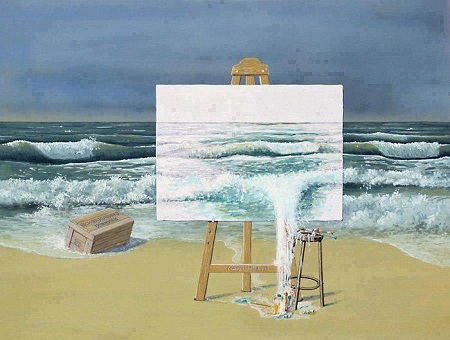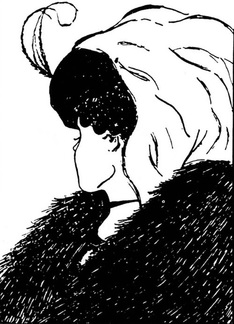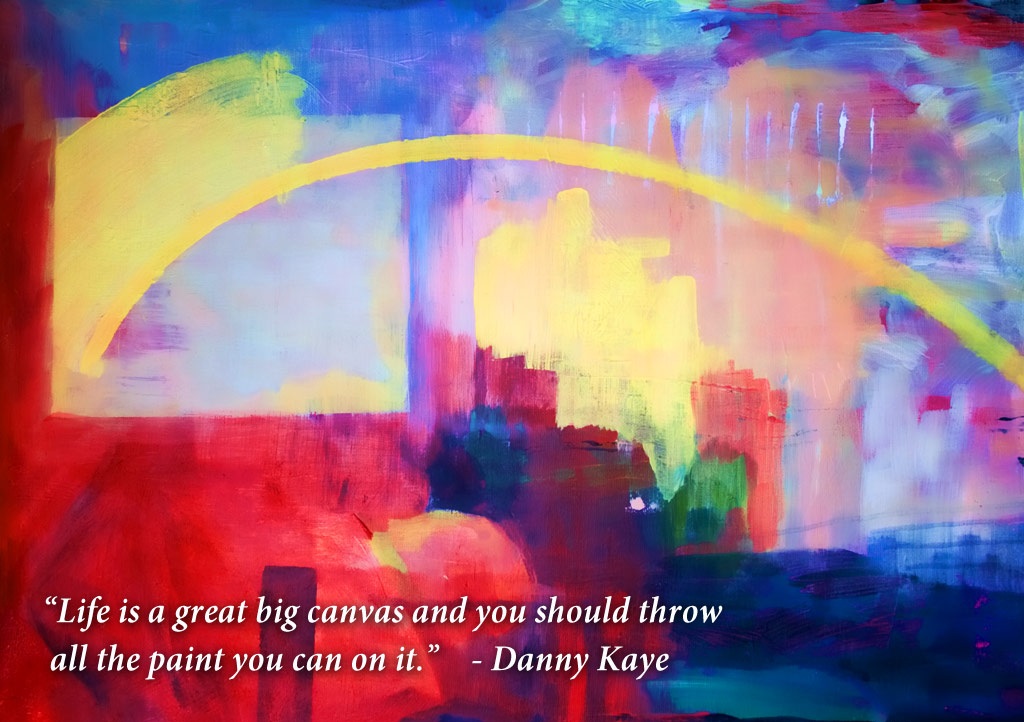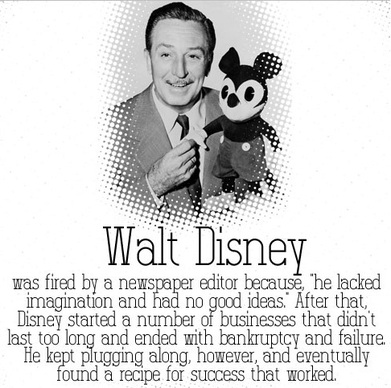|
|
|
|
As we walk through the world, we are all
inundated by a plethora of sensory information. We constantly visualize our
ever-changing surroundings, hear a myriad of endless conversations, and smell
the many scents floating around our environment; our surroundings relentlessly
pour in like a never-ending waterfall. Unfortunately, with such overwhelming
sensation, it is literally impossible to process all of this information; our
minds are simply not programmed to do so. Instead, our reticular activating
system (RAS) - or portion of the
brain partially responsible for consciousness - filters this information
and selectively focuses in on the most crucial pieces. Then, using this relevant information, your RAS forms a perception of the
world which aids in navigating your surroundings. If you think of this sensory information as paint
sold at a craft store, then your RAS is the conscious force
which selects the paint of interest, purchases it, and puts it to use. It is the creator - the artist who takes this paint and
crafts a distinct picture (or perception) of reality. Furthermore, the way in which our RAS behaves is quite unique, and its present focus is
contingent upon our current influences.
In a given situation, the picture I paint of reality often substantially
differs from your own.
|
|
To explore this idea a bit further, let's first play
with a very common thought experiment.
Suppose that I had just been telling you about an older lady I just met. Almost in her late seventies, this old woman
- who will now be referred to as Beth - looked quite decrepit, and most of her
defining features were slowly fading away.
For example, most people would describe her as having a large, wrinkly
nose, and her pointy chin greatly resembled that of a witch. Now, after the discussion, suppose that I
show you my own sketch of Beth, which can be found to the right.
Based upon the description I had given you, you would naturally expect
to see a rendition of an older woman. I
had provided you the sensory information (or paint) to form a mental perception
of this woman; you were essentially predisposed to see her as old and
decrepit. However, what if I told you
that the woman in this sketch is actually young and attractive? Would you be able to see what I see? If your RAS was focused on the description I
had fed you, you would most likely struggle to see this perspective; you had
already painted your picture of Beth and made up your mind. However, if I pour more sensory information
into your consciousness, you may begin to accept my perception. I could describe the woman's necklace and
charming features - such as her petite nose and eyelashes. Doing so would provide additional sensory
information for crafting your reality; you would then have that extra paint for
perceiving Beth as a young, attractive woman.
|
Based on the sensory information we're fed, we all end up painting a different picture of reality. If I initially told you that this sketch shows an old decrepit lady, would you be able to see a young, attractive woman? How do your own sources of information and influences end up affecting your perceptions of reality; are they in-line with your governing life principles or holding you back? |
As the painter of reality, you are ultimately in control of the perception process; you have the power to shape your own world as you please. So, you might as well paint a picture that always works with you - not a hindrance that holds you back. If you can master these skills, then your perceptions will always be of service to you, regardless of the path ahead. |
Now, as you can imagine, both your painting
style and selection of paints greatly impacts how you see and react to your
surroundings. If you perceived Beth as
being old and decrepit, you would be more inclined to act both kindly and
respectfully in her presence. You
wouldn't be motivated to romantically pursue her - as you would if you expected
to meet a young, attractive woman. Furthermore,
each comes at a
different cost, greatly influencing how the events of your life pan out. For example, suppose that Betty is currently
in a bad mood and chooses to paint her reality with a negative undertone. When confronted with challenges throughout
the day, her current disposition compels her to distort reality and see
everything in an unproductive, disengaged manner. If she can not immediately find a solution to
problems at work, she becomes frustrated and blames her boss - perceiving the
task as impossible. When her daughter
approaches her for help and guidance, she lacks understanding and is quick to
deliver harsh judgments. Regardless of her husband's actions, she chooses
to blame him for everything and shows no support or love.
|
|
In each situation above, it is clear that
Betty's painting of reality - her negative disposition - bleeds into every
facet of her life. Her RAS focuses solely on the
unconstructive, disempowering aspects of her day - purchasing a dull palette of
colors. Unfortunately, painting your
reality with dull colors only leads to unexciting, detrimental results, and the
overall cost of doing so far outweighs the benefit. It always takes more than
it gives. In the case of Betty, choosing to negatively paint her reality made
her day unproductive and ended up hurting her in the long run - jeopardizing
important relationships in the process.
Instead, she could have chosen to paint herself as a determined, loving,
and supportive individudal - a person who accomplishes tasks and lights up rooms no
matter what. In that case, she would
have been predisposed to follow a higher standard. She would have taken responsibility and
worked diligently to solve work-based problems; she would have genuinely
listened to her child and helped her as much as possible; her relationship with
her husband would have unconditionally grown.
In other words, she would have no tolerance for second-class behavior. So, how does your selective focus and
painting of reality end up affecting your own life? In order to be successful, it is imperative
that we all first slow down and take the time to properly analyze and adjust
our perceptions / daily habits.
|
If you are the artist holding the paintbrush, then why would you ever choose to craft a reality you hate - one which holds you back and fails to motivate? Doing so is unintentional suicide and will bleed into every area of your life - leading to undesired results. Instead, you must strive to cultivate an invigorating reality from which all beauty and success emanate. |
Your picture of reality also serves as a personal map for navigating the world. So, in addition to supporting your endeavors, it should also converge upon reality as much as possible; it must aid in traversing all terrain throughout your journey. If your picture of reality fails to accurately provide this knowledge, it becomes a useless asset and is on par with using a map of Detroit to navigate New York. |
When we paint our picture of reality, the human
element exists between sensation and action.
It is that selective discernment which governs our painting style, and
we are all either conscious or unconscious of the entire process. As Betty's example above illustrates, we must
learn to consciously control this process in order to cultivate inner success. We must become the driver behind the wheel -
the painter who holds the paintbrush - and shape our reality such that it
always supports our endeavors. While
doing so, there are also several important factors which must be
considered. First of all, our paintings
of reality also serve as our personal maps of the world. They provide the knowledge with which we
navigate and respond to our surroundings.
As such, it is essential that our paintings converge upon reality; they
must provide accurate information and serve us as much as possible. If we fail to craft a precise map, it is on
par with trying to navigate New York with a map of Detroit. The map will provide nothing but deception,
leading us astray. Conversely, an
accurate map can make the difference between winning and losing. It provides that sense of clarity and
direction which guides any endeavor towards success. If your goal is to navigate New York effectively, you
better make sure that you're holding a detailed map of New York - not a useless map
of Detroit.
|
|
At the same time, you must also ensure that your
painting of reality always works with you - not against you. It should be structured in your favor and
invigorate every aspect of your life. If
you are the artist holding the paintbrush, then why would you ever choose to
craft a reality you hate - one which holds you back and fails to motivate? Doing so is unintentional suicide. Yet, most of society unconsciously engages in
this behavior, and our minds can be our greatest enemies if left untamed and
not fully understood. As the creators,
we must not only understand the perception process but also tame it. We must strive to paint our world into an
existence we love - a reality that inspires and always supports our endeavors. It should always provide that focused
discipline, intent, and passion in any situation - no matter what. If you can master this skill, then your
perspective will always place you on a higher level; it will provide that
foundational support from which you can reach out and grab your dreams.
|
 If left untamed, your mind can sometimes be your greatest enemy; however, once understood and controlled, it can also serve as your greatest ally. Thus, you should always strive to understand the perception process and build an existence that you love - one which supports all of your endeavors. Once you learn to tame your mind and its unlimited powers, you can shape your reality as the creator with no restrictions - the artist with full access to the paintbrush. |
With a poorly-crafted picture of reality, a failure may be perceived as a devastating blow - something which halts progress. However, if you learn to paint a picture which always supports you, failure then becomes a stepping stone towards success; it indicates what approaches don't work, providing useful insight. Such a paradigm will compel you to try again with a renewed vision, and you will inevitably be better prepared. Remember; success is born from throwing as much paint onto the canvas as possible - through repeated iterations. It hardly ever originates from one session with limited paint. |
For example, suppose that you had invested a
significant amount of time to start a new company. However, due to certain circumstances, it
eventually ended up failing and falling into bankruptcy. In such a situation, you essentially have one
of two options. First, you can choose to
perceive the undertaking as a waste of time, and you may even label yourself as
inadequate - someone who was unable to deliver.
By painting the situation in such a negative manner, do you think there
would be any chance of pulling your company out of debt; would there be any
hope of redemption? Probably not.
If you believe that there's no chance of recovering losses, then you
certainly won't be inspired to work through the problems. Your painting of reality would not provide
the motivation and drive to crawl out of such a mess. Furthermore, such an insidious mentality would most likely leak
into other areas of your life, failing to provide that extra push needed for
success. Alternatively, you could also
take the glass half-full approach. You
could realize that, although you failed to attain your main goals, the
experience also provided great insight.
It indicated what aspects didn't work, and you can integrate that
knowledge into future endeavors. In that
sense, any "failure" - regardless of its context or magnitude - can
be painted as a stepping stone towards success; it can be a positive event
which enriches you, instead of disempowering you.
|
|
Furthermore, such a proactive mindset would most
likely provide the courage and faith to pull the company out of debt. It would fuel that perseverance needed to
make a difference and support your endeavors.
In fact, the most successful people throughout history were actually
plagued by failure. Yet, they chose to
paint themselves as resilient individuals who eventually turn any situation into
success; they painted a picture of reality which supports them. Soichiro Honda's company fell into bankruptcy
multiple times before growing into its current state; Henry Ford started two
failing companies prior to founding Ford Motors and innovating manufacturing
processes; Walt Disney was actually fired for lack of creativity (what a
completely oblivious boss, huh?) before starting his own company. In each case above, these individuals are now
household names due to their character - not solely as a result of their
talents and ideas. If you fail to paint
reality in a way that supports you, then the most brilliant idea can fall flat
on its face. What do you think would
have happened if these individuals adopted a disempowering mindset instead -
one that prevented them from taking action; would they still be the giants they
are today? Probably not; there's a great chance that they would have given up
after initially failing. That's why it's
absolutely imperative that you take the time to paint a proper picture of
reality - one which supports your endeavors and always gives more than it
takes.
|
Without some failure, there would be no major success; the two ideas sometimes feed into one another. However, in order for failure to breed success, sufficient resilience and perseverance are required. We must paint our pictures of reality such that they support all of our endeavors and compel us to push forward - no matter what. If Walt Disney failed to craft a reality that supported him, he would have given up on his dreams, and the fruits of his labors - Disneyland, Mickey Mouse, etc - would not exist today. |
Do you currently paint your picture of reality in a way that fails to support you and want to learn how to improve it? Stay tuned for part two, which will show you how to enhance your current state of affairs and expand on the second half of the video.
Like our content? Share it with your friends!
Or join the discussions on our community forum!










